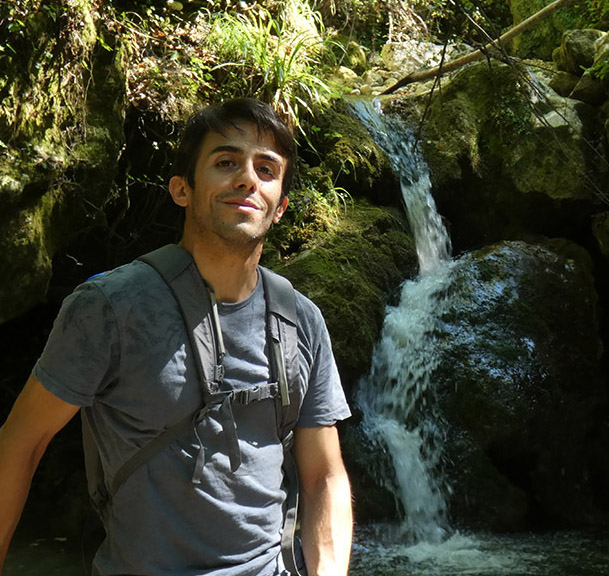Conference Programme
Programme overview

The Pre-Conference Workshop is scheduled to start one week ahead of the conference, from 26 to 31 May.
Programme for the oral and poster sessions
Programme for the oral sessions
Each presentation for oral sessions 1-10: 15 min including Q & A
Both standard (4:3) and widescreen (16:9) slides are acceptable.
Programme for the poster sessions
Onsite poster size: A0 (1,190 mm in length, 840 mm in width)
Online poster must be submitted in a single-page PDF by 14 May 2024.
Keynote speakers
 Prof. Geoffrey A. Boxshall (The Natural History Museum, London)
Prof. Geoffrey A. Boxshall (The Natural History Museum, London)
Title:Copepods and Sustainable Development, in the era of climate change
Copepods comprise one of the three hyper-abundant groups of metazoans and they occur more-or-less everywhere there is liquid water. They dominate the marine zooplankton and, through this in particular, play a pivotal role in the global biogeochemical cycles. Copepods are not especially species-rich but they are highly diverse in body form and lifestyle, with about a third of described species living as symbionts on hosts ranging from sponges to mammals. So how can our fascinating and beautiful copepods have an impact in the arena of Sustainable Development?
In 2015 the United Nations Sustainable Development Summit adopted 17 Sustainable Development Goals (SDGs). Such intergovernmental initiatives are important because, at the highest levels, they help determine priorities for national government spending on science. A quick glance at these aspirational goals would suggest that one of them, Life below Water (SDG 14), is especially relevant to our copepod research community. However, the focus of SDG 14 is solely on the marine environment and we know that the role of copepods in freshwater ecosystems is equally vital. Inland waters and their inhabitants are included in Life on Land (SDG 15).
The world of Copepod research and the world of SDGs seem to be polar opposites in the vast sphere of human endeavour so the primary focus of this presentation is to highlight the relevance of our work on copepods to biosphere-level SDGs but it will also stress the wider importance of copepods in issues such as human health and wellbeing, and food production and its impact on the environment. The SDGs were targeted for 2030 and progress to the halfway point will be outlined. It isn’t very encouraging! The final section of the presentation will look at climate change. Climate Action is SDG 13, but the pace of climate change is alarming. There are many uncertainties but we do know that, as the Earth warms, there will be a lot more ocean for copepods to inhabit.
 Prof. Yuichi Oba (Chubu University, Japan)
Prof. Yuichi Oba (Chubu University, Japan)
Title:Copepods have changed the marine bioluminescence world
There are so many bioluminescent animals in the ocean, from unicellular radiolarians to bony fishes, and it is notable that most of these animals use the same chemical substance, called coelenterazine, as a substrate of their bioluminescence reactions. Some of them, such as cnidarian jellies, are unable to biosynthesize coelenterazine by themselves, thus they probably obtain the coelenterazine from diet of other marine bioluminescent animals possessing coelenterazine, and this is probably the same in bioluminescent fishes too. Now, who synthesize the coelenterazine in the ocean? We have proved that a luminous copepod has ability to biosynthesize the coelenterazine. Considering the extreme richness of the copepods in the ocean, we can suggest that many (or the most) of the marine bioluminescent animals use the coelenterazine produced by copepods via marine food chain transfer. Copepods now sustain the world fisheries, and in ancient times, changed the world of marine light productions.
Maxilliped lecture
 Prof. Hans G. Dam (University of Connecticut, USA)
Prof. Hans G. Dam (University of Connecticut, USA)
Title: Copepods as model systems for the study of the response of the biota to global change
Copepods are, arguably, the most numerous metazoans in the oceans. Consequently, they play a major role on food webs by linking microbial communities to upper trophic levels. Through the processes of ingestion, defecation, excretion, and through diel vertical migration, copepods are also a key component of biogeochemical cycles. One of the most formidable scientific challenges is predicting the biota response and scope for adaptation to aquatic global change drivers such as warming, acidification, deoxygenation, harmful algal blooms, pollution, etc. Because of their short generation times, large population sizes, and extant genetic variation, copepods are ideal candidate systems for understanding the response of animals to global change. Yet, most recent reviews of the literature on the topic ignore copepods. My talk will focus on recent advances documenting the response of copepods to global change. I will discuss approaches to documenting adaptive responses and highlight examples, limitations to predictions, and fruitful avenues of research to move the field forward.
Symposium
Symposium 1
Evolutionary Dynamics
Symposium Organizers: Prof. Grace Wyngaard and Dr. Marvin Choquet
Copepod genomes hold the key to understanding their evolution and the mechanisms underlying their diverse and fascinating adaptations. In the past decade, remarkable advances in molecular methods and sequencing technologies have revolutionized biological research, providing unprecedented access to previously elusive information. Advances in genomics have the potential to bring a new light to unresolved issues across the fields of taxonomy, physiology, phylogeny and ecology. In Copepods, however, our access to genomic information is fiercely challenged by small body sizes, large duplicated or repeated genomes and unusually high levels of heterozygosity that make current technologies stutter. Creative strategies are therefore required to uncover the molecular mechanisms behind traits exhibited by invasive species, and to reveal the genetic basis of Copepods’ responses to climate change. Join us in this session of Evolutionary Dynamics in copepods, where we will discuss the invaluable insights attainable from copepod genomes, the persistent challenges hindering understanding of their evolution, and the innovative approaches developed by copepodologists to overcome these.
1. Genome Architecture Evolution in an Invasive Copepod By Carol Lee
2. Copepod phylogenomics with a target-enrichment probe set for 100's of genes across all copepods By Jimmy Bernot
3. Unlocking the first large genome of the key zooplankton genus Calanus: challenges and insight By Marvin Choquet
4. An integrated phylogenomic approach for potential host-associated evolution of monstrilloid copepods By Donggu Jeon
 |
 |
 |
 |
 |
| Grace Wyngaard | Carol Lee | Jimmy Bernot | Marvin Choquet | Donggu Jeon |
Symposium 2
Diversity, Ecology, and Evolution of Symbiotic Copepoda
Symposium Organizers: Dr. Julianne Kalman Passarelli and Dr. Danny Tang
Nearly 15,000 valid copepod species are known, about half of which live in symbiotic associations with nearly every animal group, ranging from sponges to cetaceans. Copepods are common parasites of marine and freshwater fishes, and they are known to cause diseases in finfish and shellfish aquaculture. They may also serve as useful bioindicators of host dispersal, host phylogeny, host population structure and both natural and anthropogenic disturbances. Only about 2% of aquatic invertebrate species and less than 20% of fishes have been surveyed for symbiotic copepods, which means there are innumerable symbiotic copepods waiting to be discovered and formally described. The global shortage of technical expertise in copepod taxonomy is a threat to biodiversity studies and aquatic animal health industries.
1. The 5th International Workshop on Symbiotic Copepoda (IWOSC) By Julianne Kalman Passarelli and Danny Tang
2. Evolutionary cul-de-sacs and highly transformed body plans: how to place them in the copepod tree of life By Rony Huys, Irina Enshina and Alexandra Savchenko
3. Difficult species identifications with Pandarus as a case study By Susan Dippenaar
4. Parasitic Copepods as Pests in Asian Aquaculture By B.A. Venmathi Maran
 |
 |
 |
 |
 |
| Julianne Kalman Passarelli | Danny Tang | Rony Huys | Susan Dippenaar | B.A. Venmathi Maran |
Symposium 3
Non-Indigenous Estuarine Copepods: Modes of Transport, Geographic Spread, and Accommodation
Symposium Organizer: Prof. Wim Kimmerer
Species introductions are a global source of concern for organisms of all kinds, and impacts of introductions can be substantial. Numerous introduced marine and estuarine copepod species have been identified worldwide, and the number is certain to increase, yet in contrast to more- studied groups and habitats, little is known of their movements or impacts. This symposium will examine several questions about introduced copepods: 1) How are they being transported; 2) What conditions in the recipient ecosystems allow for a successful invasion; and 3) How are recipient ecosystems and food webs affected? We provide three contrasting case studies of introduced copepods which together address each of these questions.
1. Copepod introductions across the Pacific Coast of North America: Origins, modes of transport, ecological impacts, and responses to a warming planet By Eric Dexter
2. Ingredients for a successful invasion - The case of Pseudodiaptomus marinus By Marco Uttieri
3. How four introduced copepod species interact in the San Francisco Estuary: accommodation in a low-productivity environment By Wim Kimmerer
 |
 |
 |
| Wim Kimmerer | Eric Dexter | Marco Uttieri |
Symposium 4
Freshwater Copepods: Redefining Biology, and Unveiling Ecological and Biogeographical Patterns
Symposium Organizer: Prof. Diana M. P. Galassi
In the face of an ever-increasing knowledge of marine copepods, biological, ecological, and biogeographical knowledge of copepods from fresh continental waters is still scant. The decline of invertebrate taxonomy and the lack of adequate molecular support result in the lack of knowledge of freshwater copepod diversity in freshwaters on a global scale. This cognitive gap becomes even more evident in groundwater environments, whose global diversity is still partially known, with severe repercussions on the knowledge of the functional role of copepods in these environments, of their autecology and on the reconstruction of the evolutionary history of current copepods’ patterns from local to the broader continental or global scale. In light of the global groundwater crisis and considering the ecosystem services that copepods provide in both surface waters and groundwaters, a new impetus of the research of the copepods living in these environments is imperative.
1. Unseen, unheard: Uncovering legislative shortfalls and research communication inadequacies in groundwater copepod conservation By Di Lorenzo Tiziana
2. Global patterns of copepod diversity in subterranean and interstitial aquatic environments By Nancy F. Mercado-Salas and Alejandro Martínez
3. Japanese Satoyama landscape and freshwater copepods By Wataru Makino
4. Conservation biogeography of European copepods through the lens of ecological modelling By Francesco Cerasoli and Diana M. P. Galassi
 |
 |
 |
 |
 |
| Diana M. P. Galassi | Di Lorenzo Tiziana | Nancy F. Mercado-Salas | Wataru Makino | Francesco Cerasoli |



